Influence of Processing Parameters on Coating Removal for High Pressure Water Jet Technology Based on Wall-Climbing Robot
Abstract
:Featured Application
Abstract
1. Introduction
2. Wall-Climbing Robot Introduction for Coating Removal
2.1. Structure Design of Wall-Climbing Robot
2.2. Internal Structure of the Coating Removal Device
3. High Pressure Water Jet Experiments and Numerical Simulation
3.1. High Pressure Water Jet Experimental Procedure
3.2. High Pressure Water Jet Numerical Simulation
4. Results and Discussion
4.1. Influence of Water Pressure on the Coating Removal for the Metal Wall
4.2. Influence of Stand-Off Distance on the Coating Removal for the Metal Wall
4.3. Influence of Travelling Speed on the Coating Removal for the Metal Wall
4.4. Influence of Inclined Angle of the Nozzle on the Coating Removal for the Metal Wall
5. Conclusions
- (1)
- The water jet numerical simulation based on the general fluid dynamic numerical simulation software FLUENT is validated by the theoretical calculation.
- (2)
- The coating removal rate can be greatly improved by increased water pressure and decreased stand-off distance. The optimal water pressure and stand-off distance for this experimental study is 120 MPa and 15 mm, respectively.
- (3)
- Travelling speed can influence both the coating removal rate and efficiency. The optimal travelling speed for this experimental study is 2.25 m/min.
- (4)
- For this designed wall-climbing robot, the rotatory movement of the coating removal device is driven by the shear force, so the proper inclined angle, that can keep enough impact force and rotation force, should be chosen.
Author Contributions
Funding
Acknowledgments
Conflicts of Interest
References
- Ortiz, F.; Pastor, J.A.; Alvarez, B.; Iborra, A.; Ortega, N.; Rodriguez, D.; Conesa, C. Robots for hull ship cleaning. In Proceedings of the 2007 IEEE International Symposium on Industrial Electronics, Vigo, Spain, 4–7 June 2017; pp. 2077–2082. [Google Scholar]
- Lee, D.; Ku, N.; Kim, T.W.; Lee, K.Y.; Kim, J.; Kim, S. Self-travelling robotic system for autonomous abrasive blast cleaning in double-hulled structures of ships. Automat. Constr. 2010, 19, 1076–1086. [Google Scholar] [CrossRef]
- Momber, A.W.; Wong, Y.C.; Budidharma, E.; Tjo, R. Surface profiling of low-carbon steel with supersonic waterjets. Wear 2002, 249, 853–859. [Google Scholar] [CrossRef]
- Lu, D.P.; Yin, H.; Tan, D.Q. A Method for Removing the Surface Coating of Cemented Carbide. Chinese Patent 102,392,249 A, 28 November 2011. [Google Scholar]
- Cristobal, A.; Conde, A.; Housden, J. Electrochemical stripping of hard ceramic chromium nitride coatings. Thin. Solid. Films. 2005, 484, 238–244. [Google Scholar] [CrossRef] [Green Version]
- Marimuthu, S.; Kamara, A.M.; Whiteheat, D.; Mativenga, P.; Li, L. Laser removal of tin coatings from WC micro-tools and in-progress monitoring. Opt. Laser. Technol. 2010, 42, 1233–1239. [Google Scholar] [CrossRef]
- Yun, H.; Zou, B.; Wang, J.; Huang, C.Z.; Li, S.Z. Optimization of energy consumption in coating removal for recycling scrap coated cemented carbide tools using hybrid laser-waterjet. J. Clean. Prod. 2019, 229, 104–114. [Google Scholar] [CrossRef]
- Folks, J. Waterjet- An innovative tool for manufacturing. J. Mater. Process. Technol. 2009, 209, 6181–6189. [Google Scholar] [CrossRef]
- Shi, Y.; Zhang, W.Z.; Cao, J.; Ehmann, K.F. Experimental study of water jet incremental micro-forming with supporting dies. J. Mater. Process. Technol. 2019, 268, 117–131. [Google Scholar] [CrossRef]
- Wei, S.G.; Xu, L.P.; He, K.; Li, J.H.; Feng, W.; Du, R.X. Experimental study on manufacturing metal bellows forming by water jet incremental forming. Int. J. Adv. Manuf. Technol. 2015, 81, 129–133. [Google Scholar] [CrossRef]
- Xue, Y.Z.; Si, H.; Xu, S.Y.; Yang, Z.L. Experiments on the microscopic damage of coal induced by pure water jets and abrasive water jets. Powder. Technol. 2018, 332, 139–149. [Google Scholar] [CrossRef]
- Huang, L.; Kinnell, P.; Shipway, P.H. Removal of heat-formed coating from a titanium alloy using high pressure waterjet: Influence of machining parameters on surface texture and residual stress. J. Mater. Process. Technol. 2015, 223, 129–138. [Google Scholar] [CrossRef] [Green Version]
- Xie, J.; Rittel, D. A two-dimensional model for metallic surface roughness resulting from pure waterjet peening. Int. J. Eng. Sci. 2017, 120, 189–198. [Google Scholar] [CrossRef]
- Mabrouki, T.; Raissi, K. Stripping process modelling: Interaction between a moving waterjet and coated target. Int. J. Mach. Tool. Manu. 2002, 42, 1247–1258. [Google Scholar] [CrossRef] [Green Version]
- Mabrouki, T.; Raissi, K.; Cornier, A. Numerical simulation and experimental study of the interaction between a pure high-velocity waterjet and targets: Contribution to investigate the decoating process. Wear 2000, 239, 260–273. [Google Scholar] [CrossRef]
- Ma, L.; Bao, R.H.; Guo, Y.M. Waterjet penetration simulation by hybrid code of SPH and FEA. Int. J. Impact. Eng. 2008, 35, 1035–1042. [Google Scholar] [CrossRef]
- Yoshida, Y.; Ma, S. Design of a wall-climbing robot with passive suction cups. In Proceedings of the 2010 IEEE International Conference on Robotics and Biomimetics, Tianjin, China, 14–18 December 2010; pp. 1513–1518. [Google Scholar]
- Balaguer, C.; Gimenez, A.; Jardon, A. Climbing robots’ mobility for inspection and maintenance of 3D complex environments. Auton. Robot. 2005, 18, 157–169. [Google Scholar] [CrossRef]
- Boscariol, P.; Henrey, M.A.; Li, Y.; Menon, C. Optimal gait for bioinspired climbing robots using dry adhesion: A quasi-static investigation. J. Bionic. Eng. 2013, 10, 1–11. [Google Scholar] [CrossRef]
- Cai, J.N.; He, K.; Fang, H.T.; Chen, H.; Hu, S.J.; Zhou, W. The design of permanent-magnetic wheeled wall-climbing robot. In Proceedings of the 2017 IEEE International Conference on Information and Automation (ICIA), Macau, China, 18–20 July 2017. [Google Scholar]
- Chen, X.L.; Wu, Y.P.; Hao, H.D.; Shi, H.L.; Huang, H.C. Tracked wall-climbing robot for calibration of large vertical metal tanks. Appl. Sci. 2019, 9, 2671. [Google Scholar] [CrossRef] [Green Version]
- Seriani, S.; Scalera, L.; Caruso, M.; Gasparetto, A.; Gallina, P. Upside-Down Robots: Modeling and experimental validation of magnetic-adhesion mobile systems. Robotics 2019, 8, 41. [Google Scholar] [CrossRef] [Green Version]
- Milella, A.; Maglietta, R.; Caccia, M.; Bruzzone, G. Robotic inspection of ship hull surfaces using a magnetic crawler and monocular camera. Sens. Rev. 2017, 37, 425–435. [Google Scholar] [CrossRef]
- Hu, S.J.; Peng, R.S.; He, K.; Li, J.H.; Cai, J.N.; Zhou, W. Structure design and magnetic force analysis of a new crawler-type permanent magnetic adsorption wall-climbing. In Proceedings of the 2017 IEEE International Conference on Information and Automation (ICIA), Macau, China, 18–20 July 2017. [Google Scholar]
- Leu, M.C.; Meng, P. Mathematical modelling and experimental verification of stationary water jet cleaning process. J. Manuf. Sci. Eng. 1988, 120, 571–579. [Google Scholar] [CrossRef]
- De Bruyn, H.; Christiaens, V.; Doornewaard, R.; Jacobsson, M.; Cosyn, J.; Vervaeke, S. Impact surface roughness and patient factors on long-term peri-implant bone loss. Periodontology 2000, 73, 218–227. [Google Scholar] [CrossRef] [PubMed]

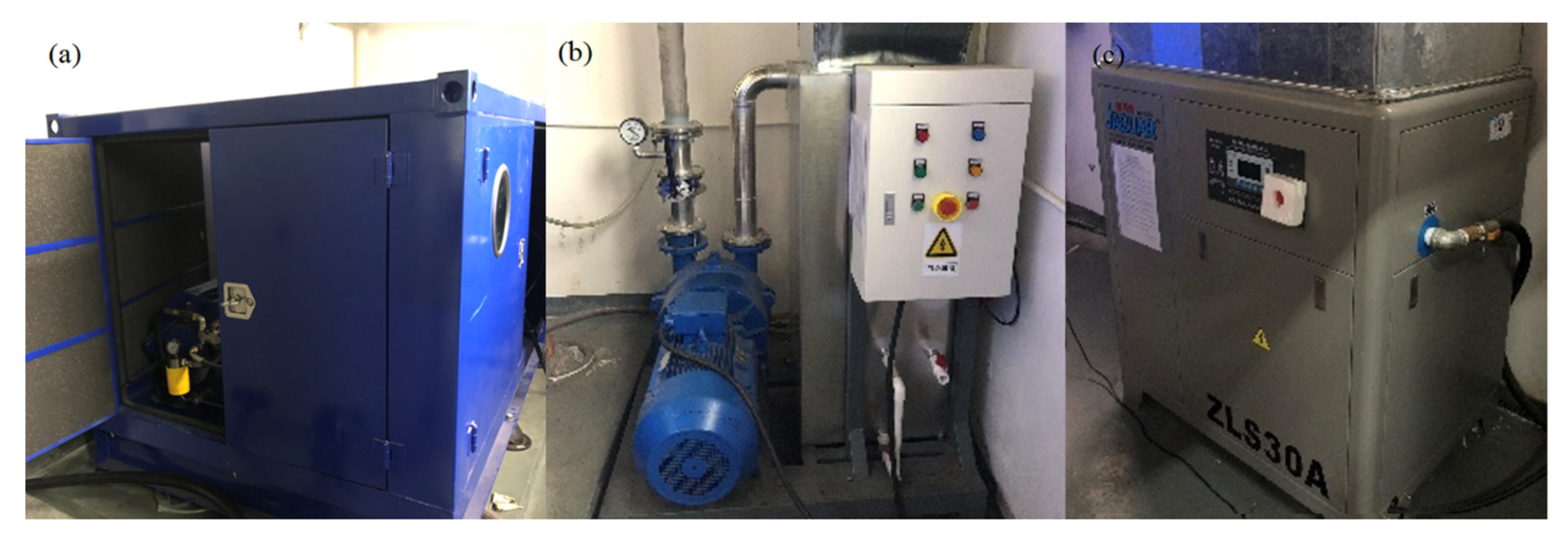
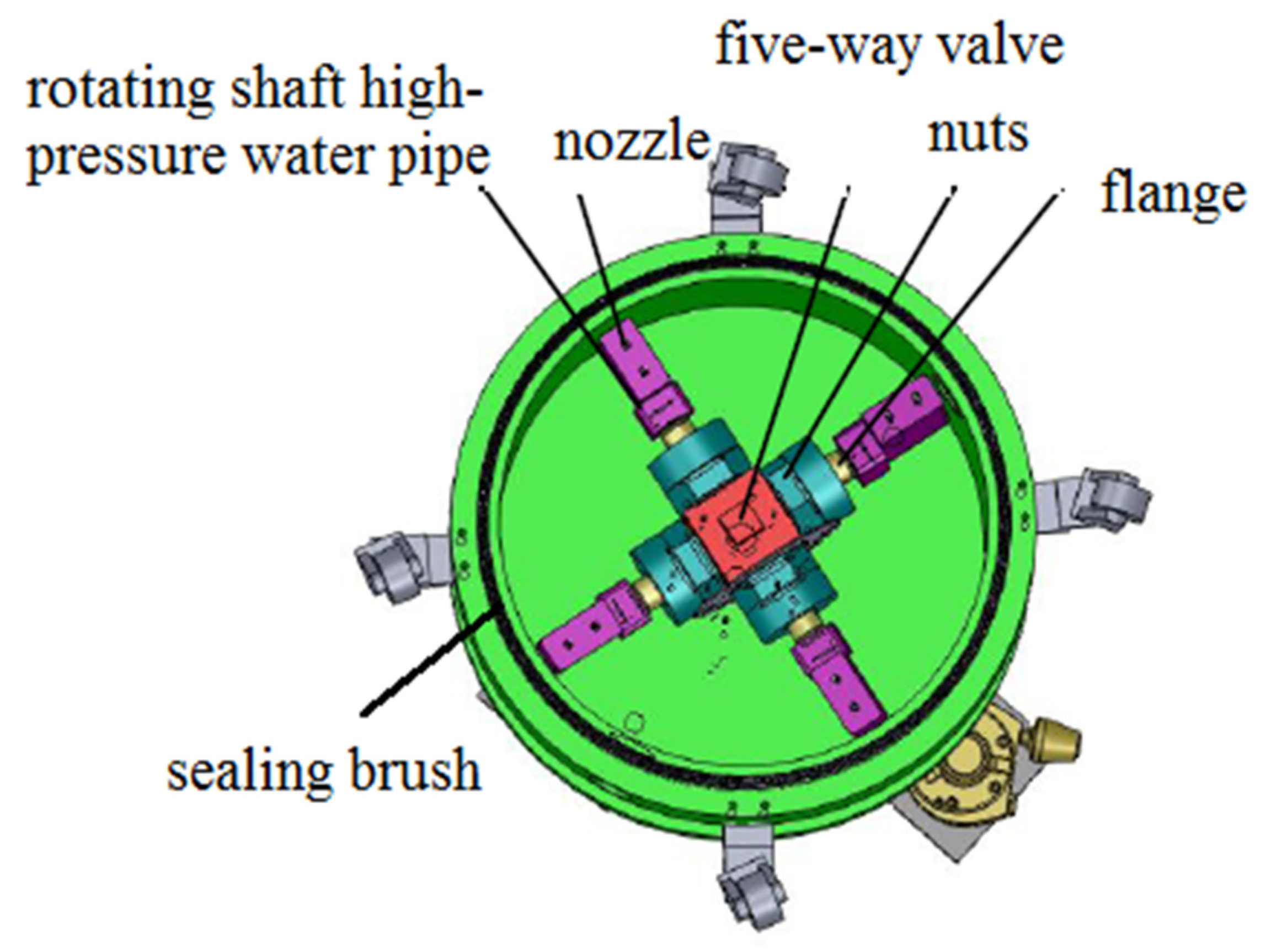
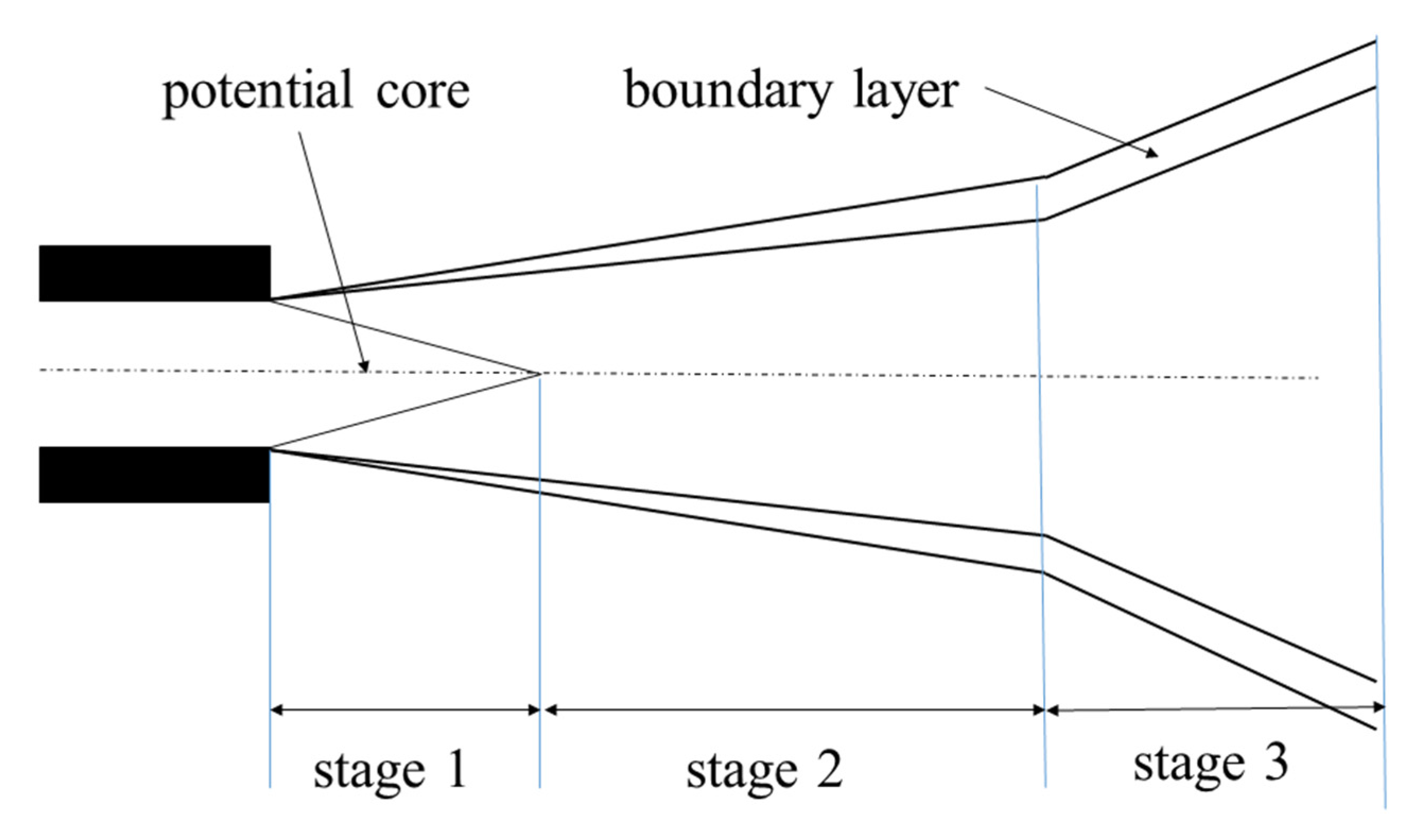
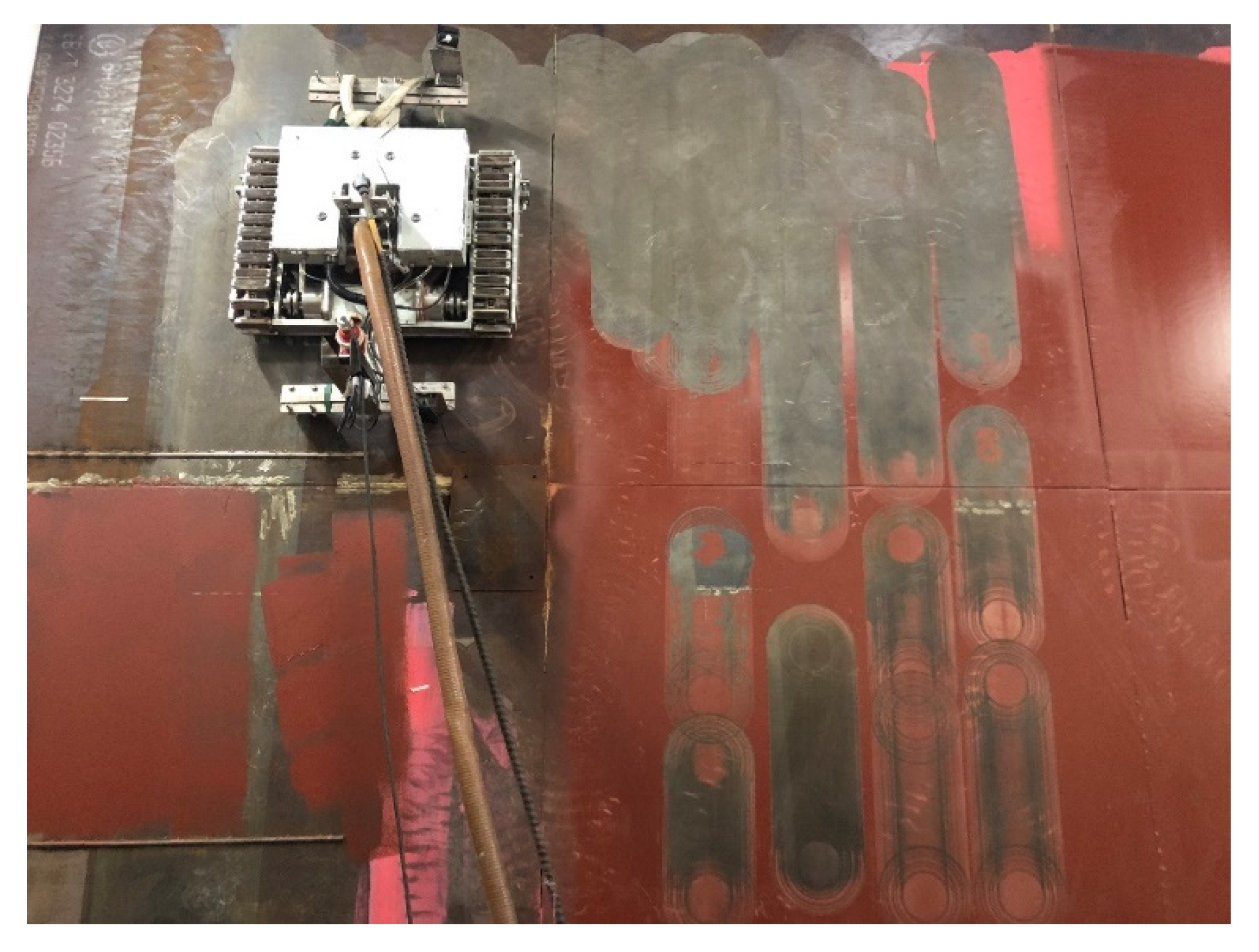

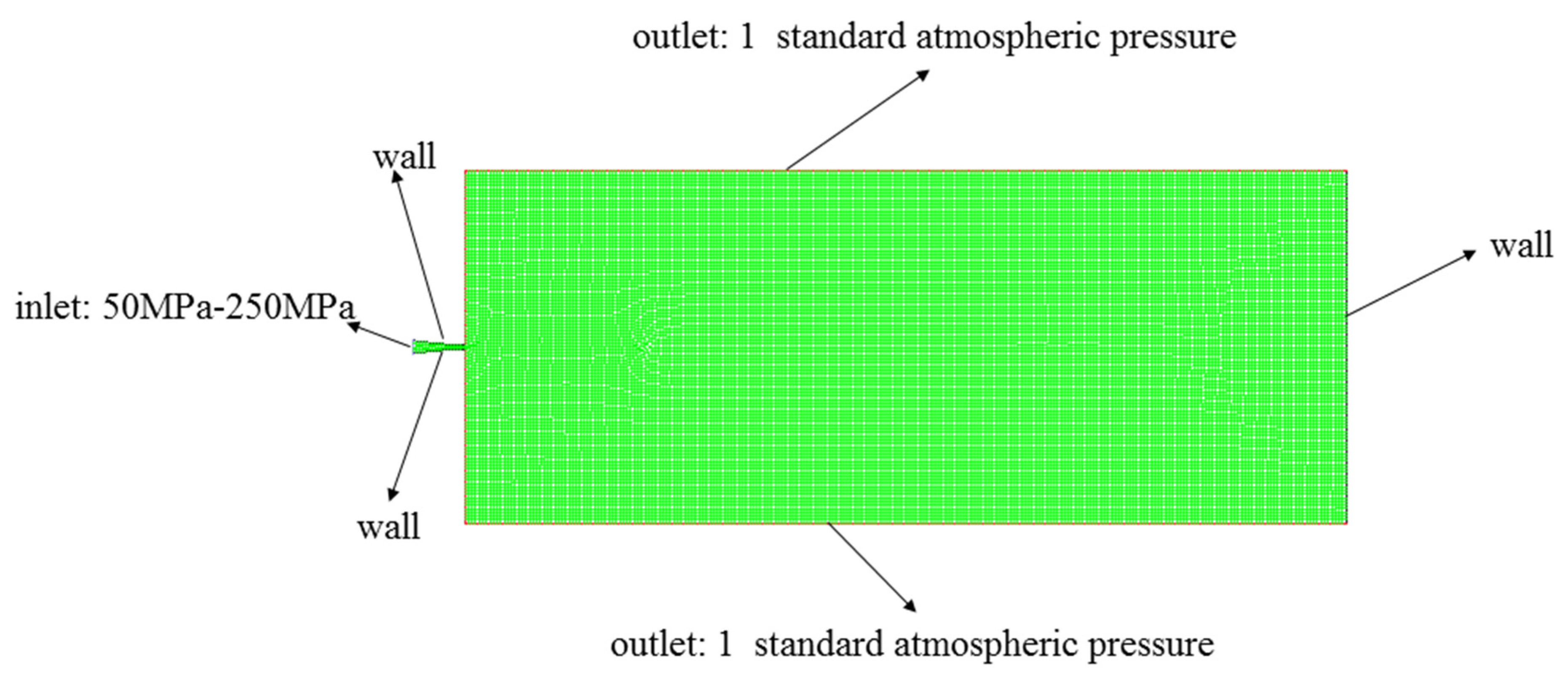

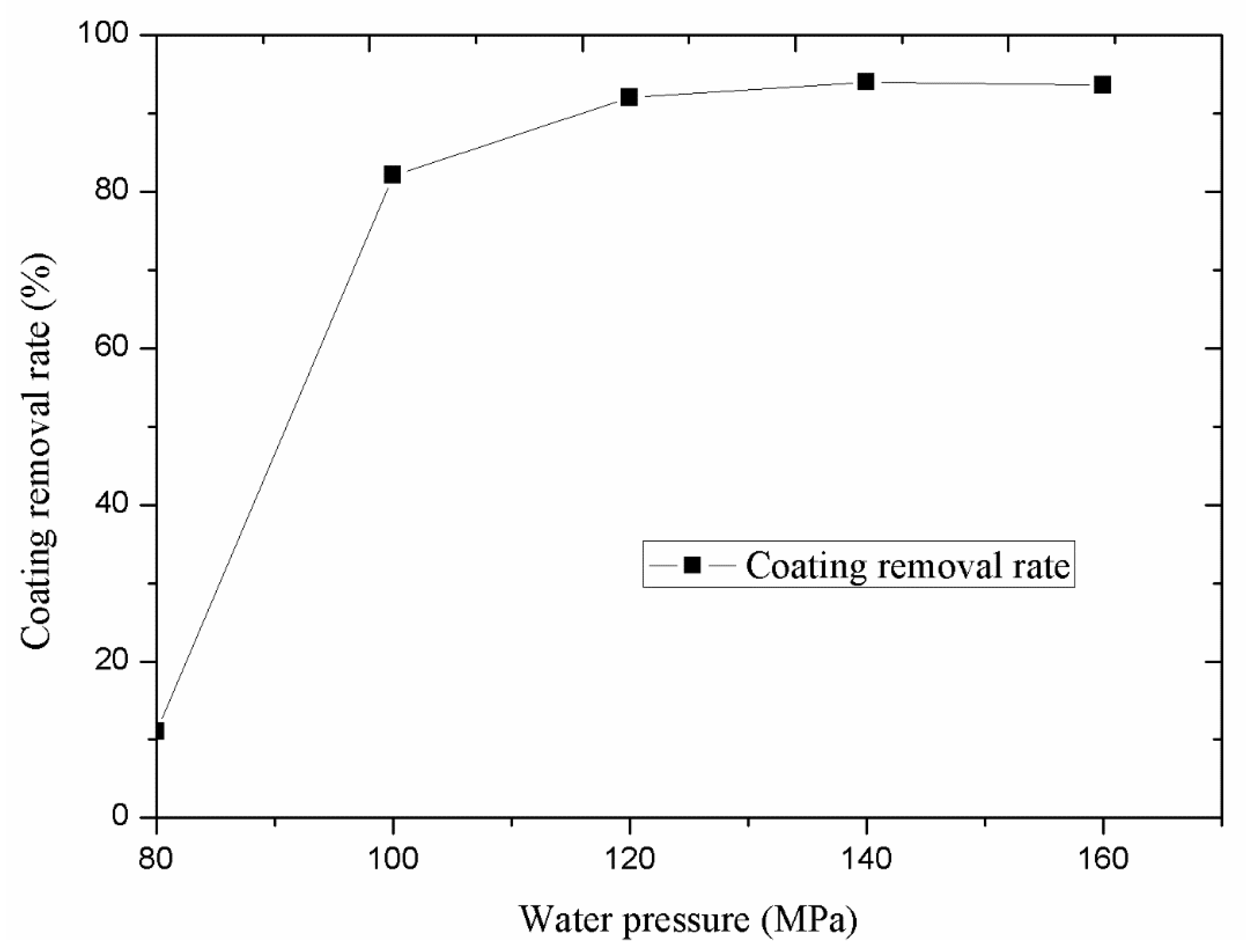

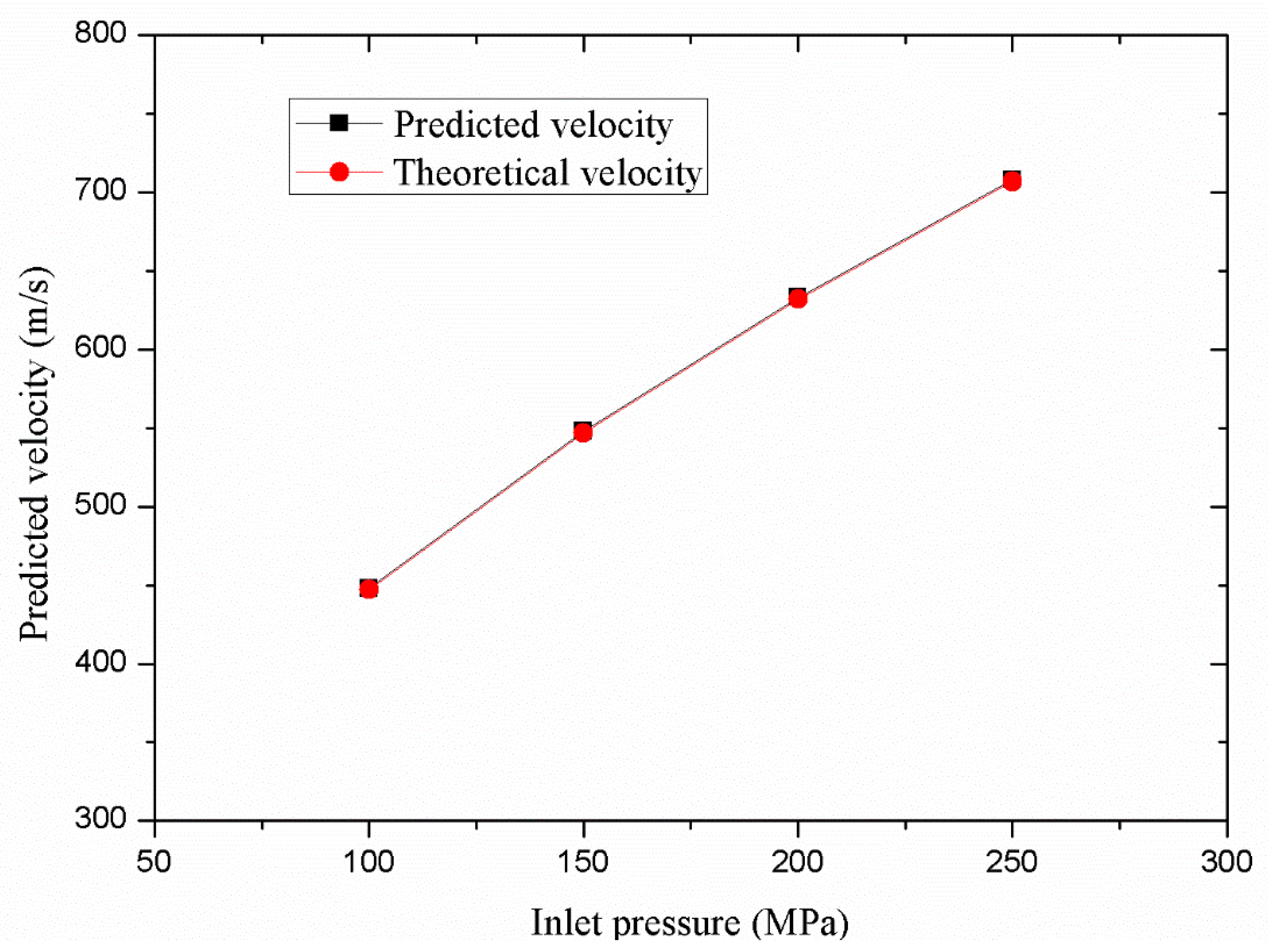
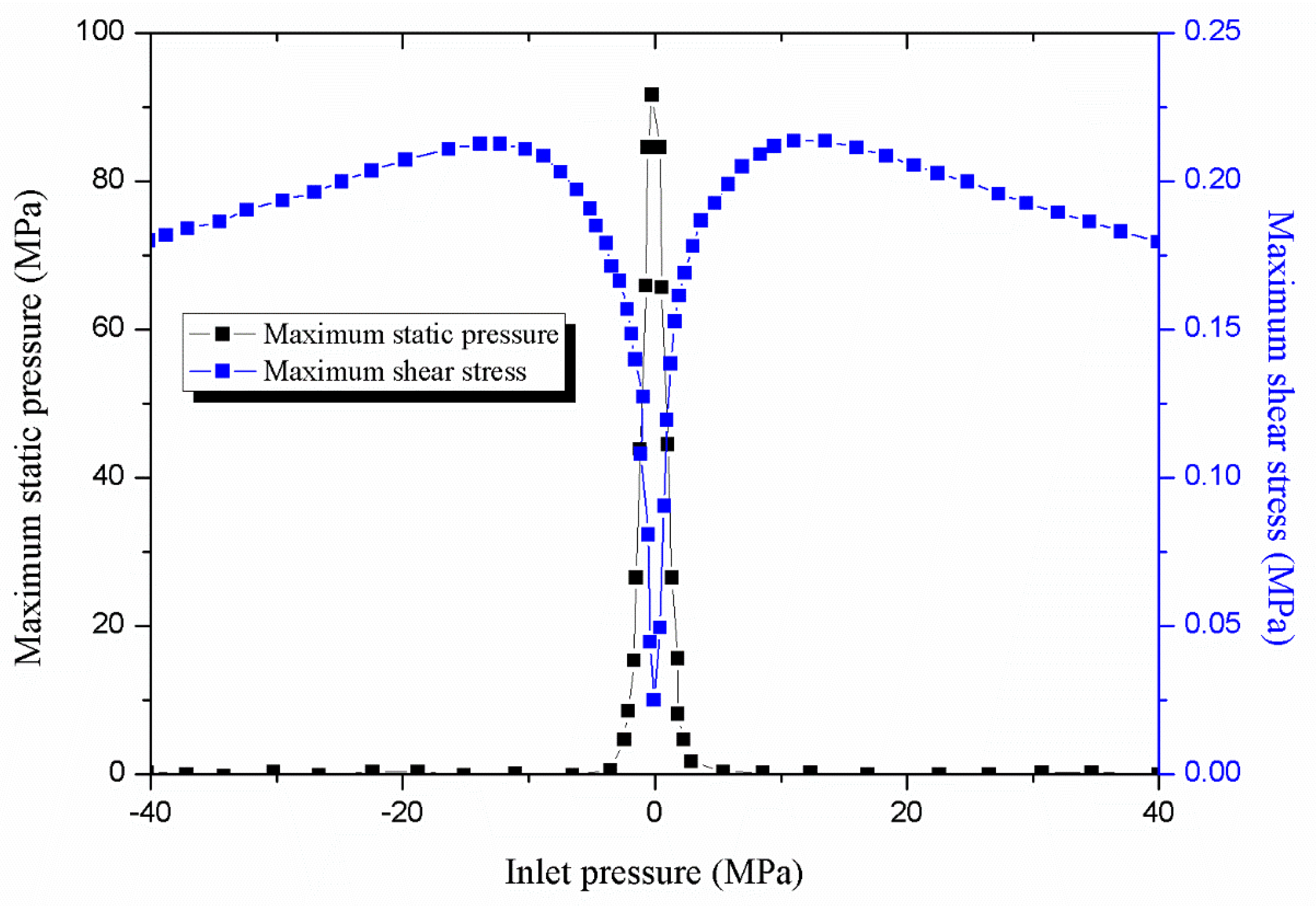
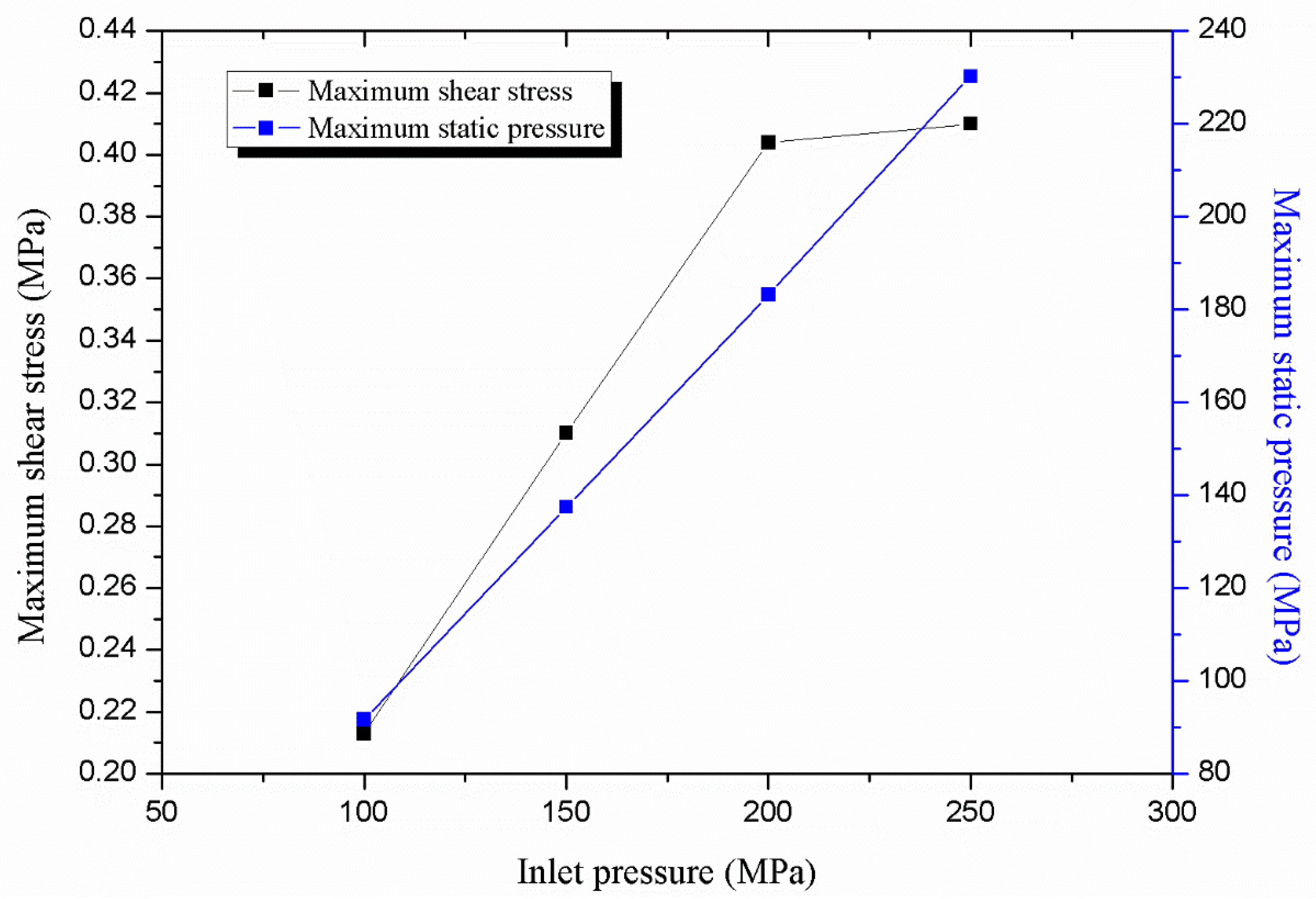

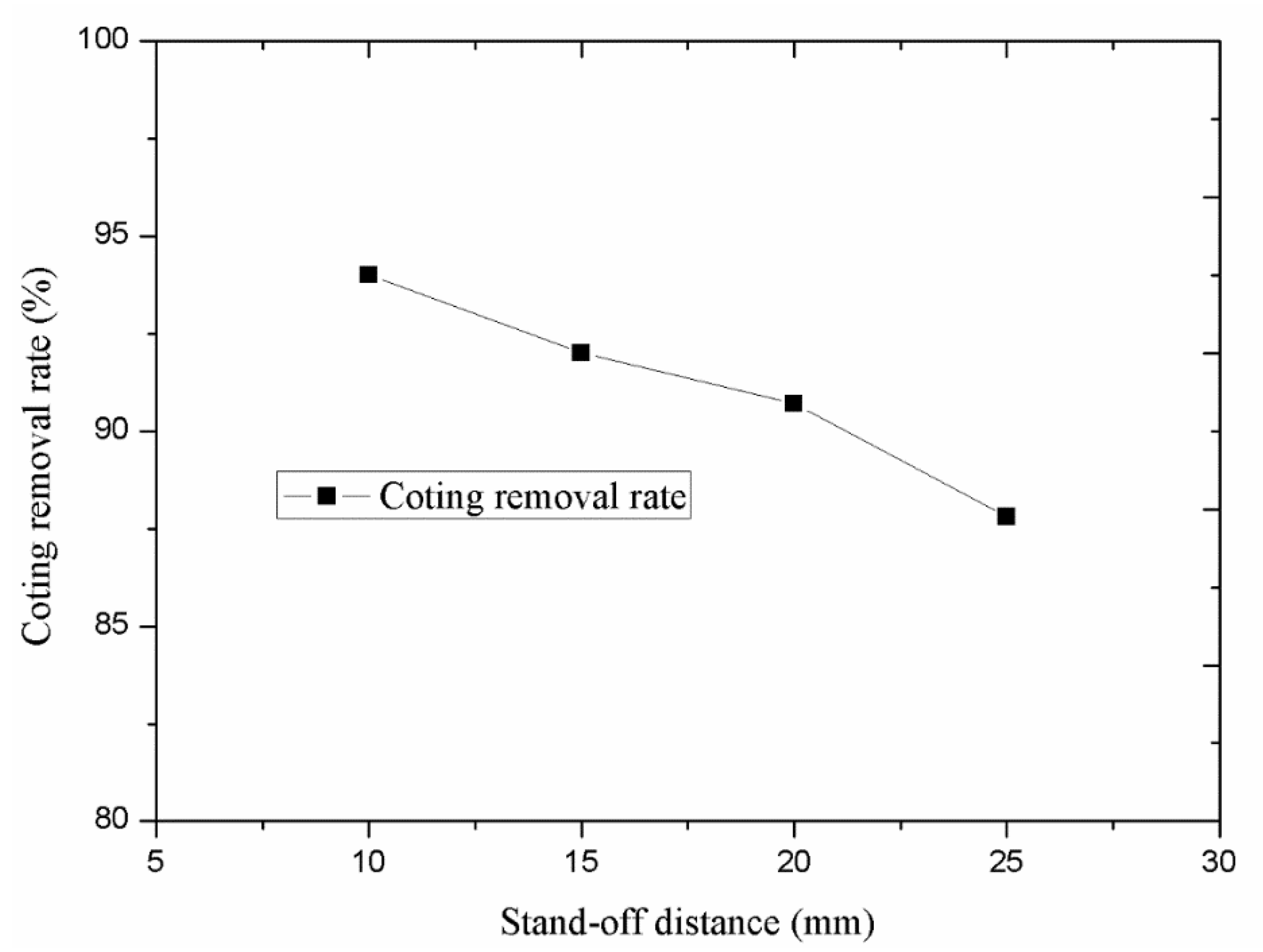
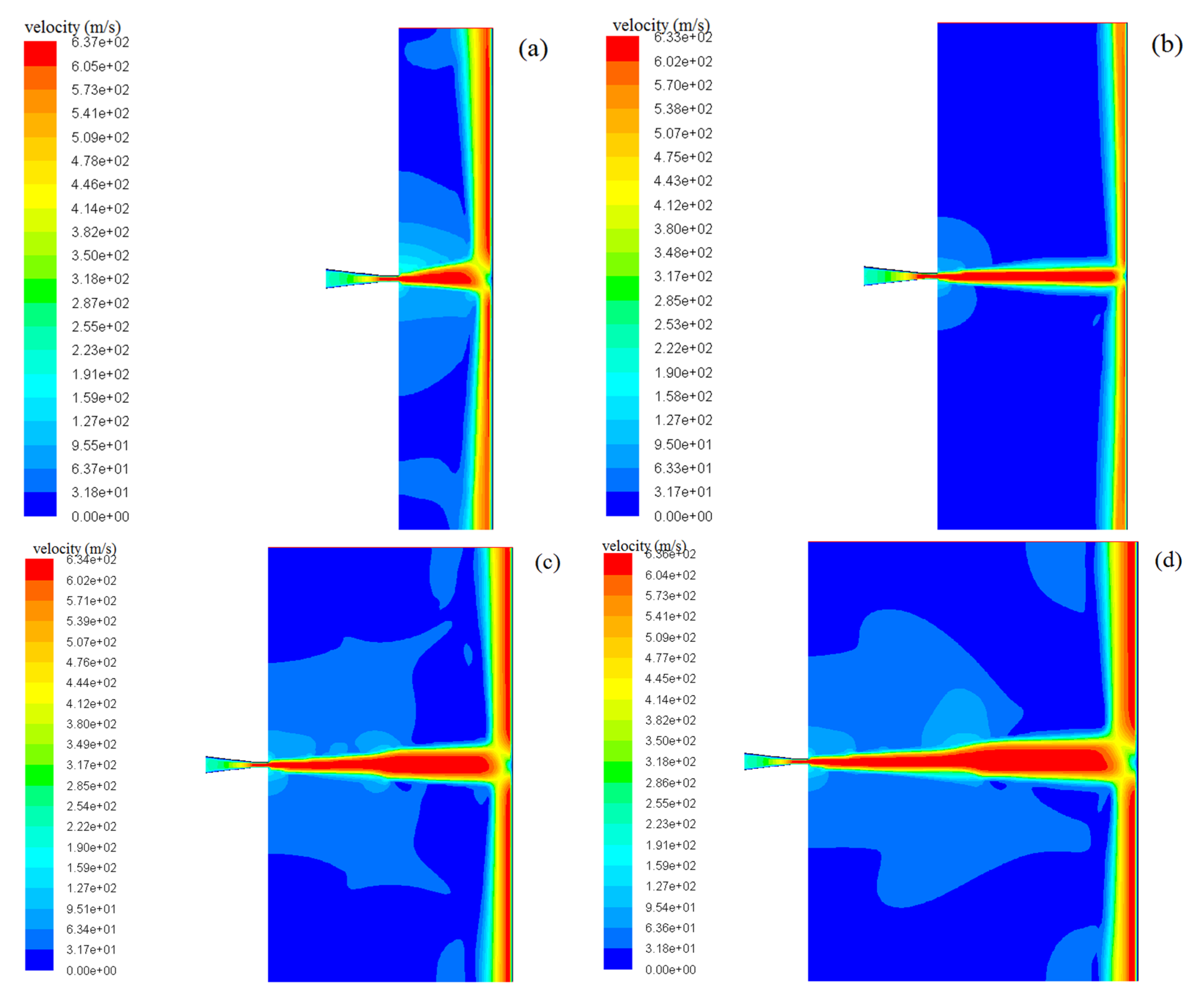
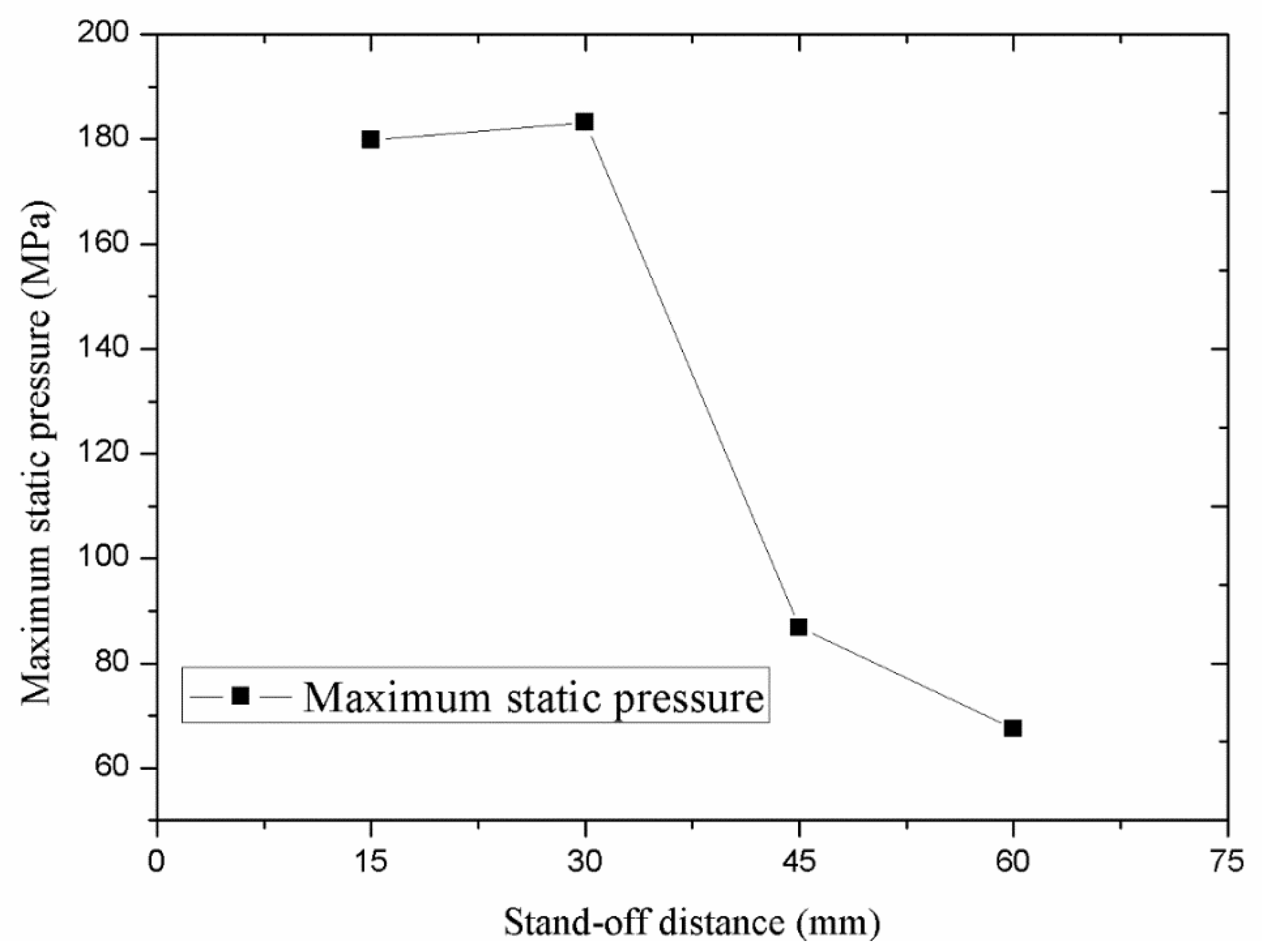

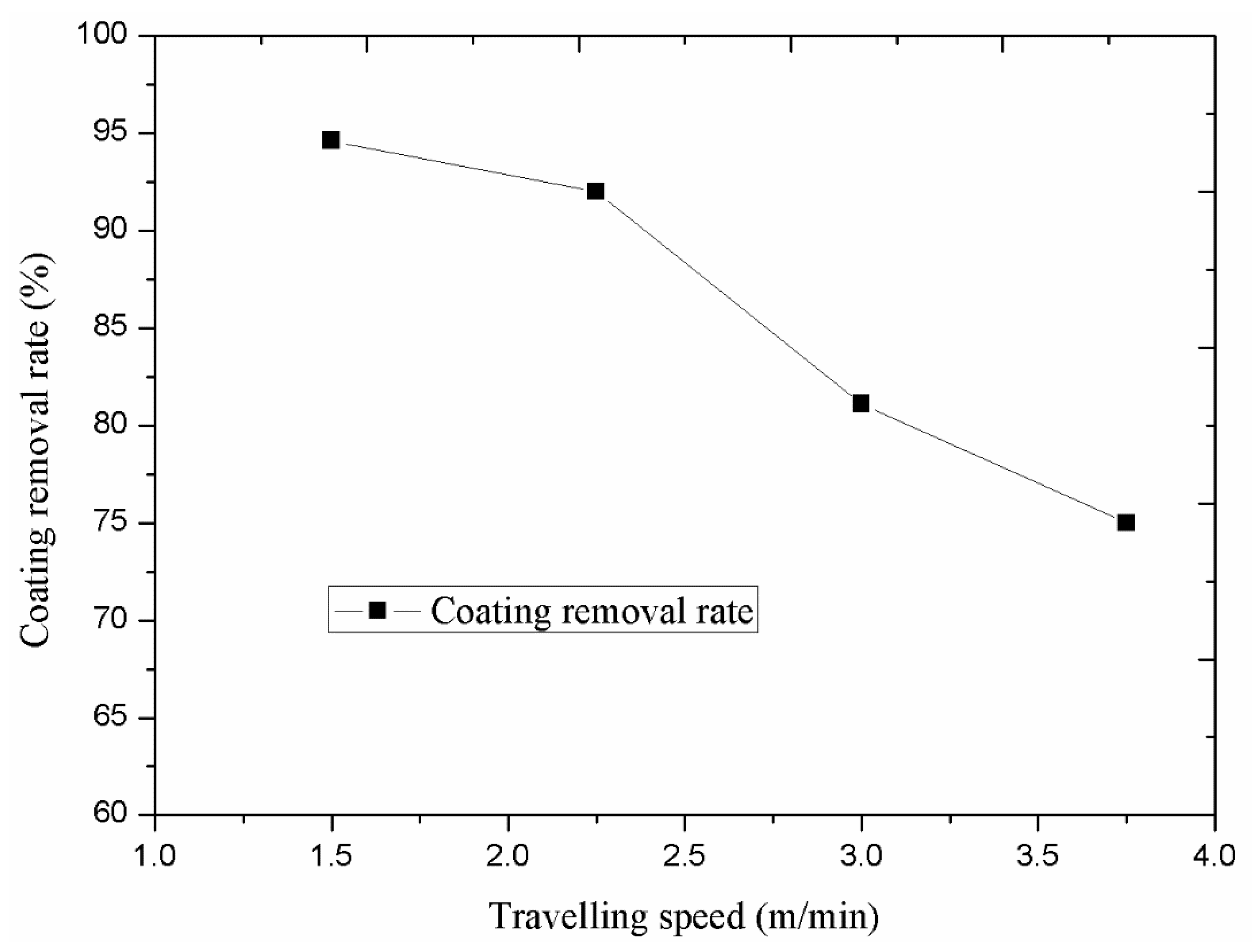
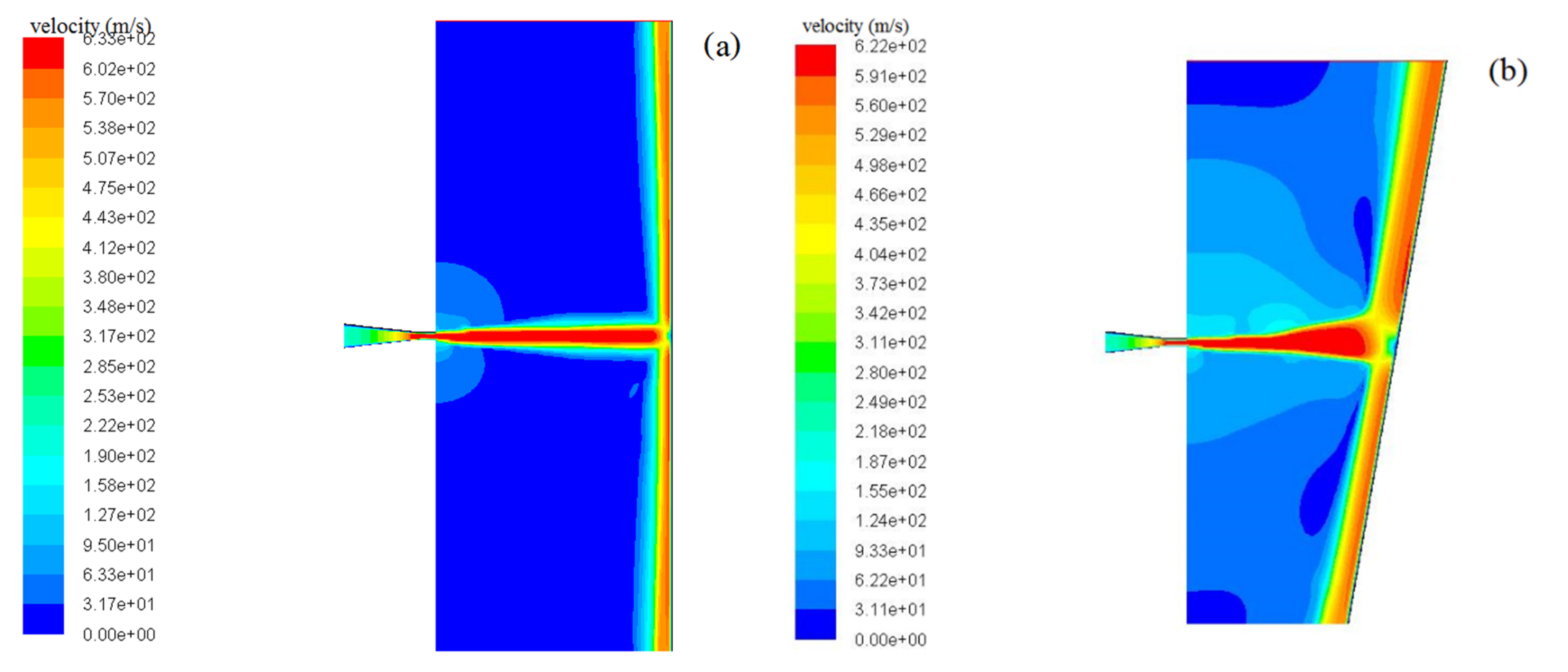
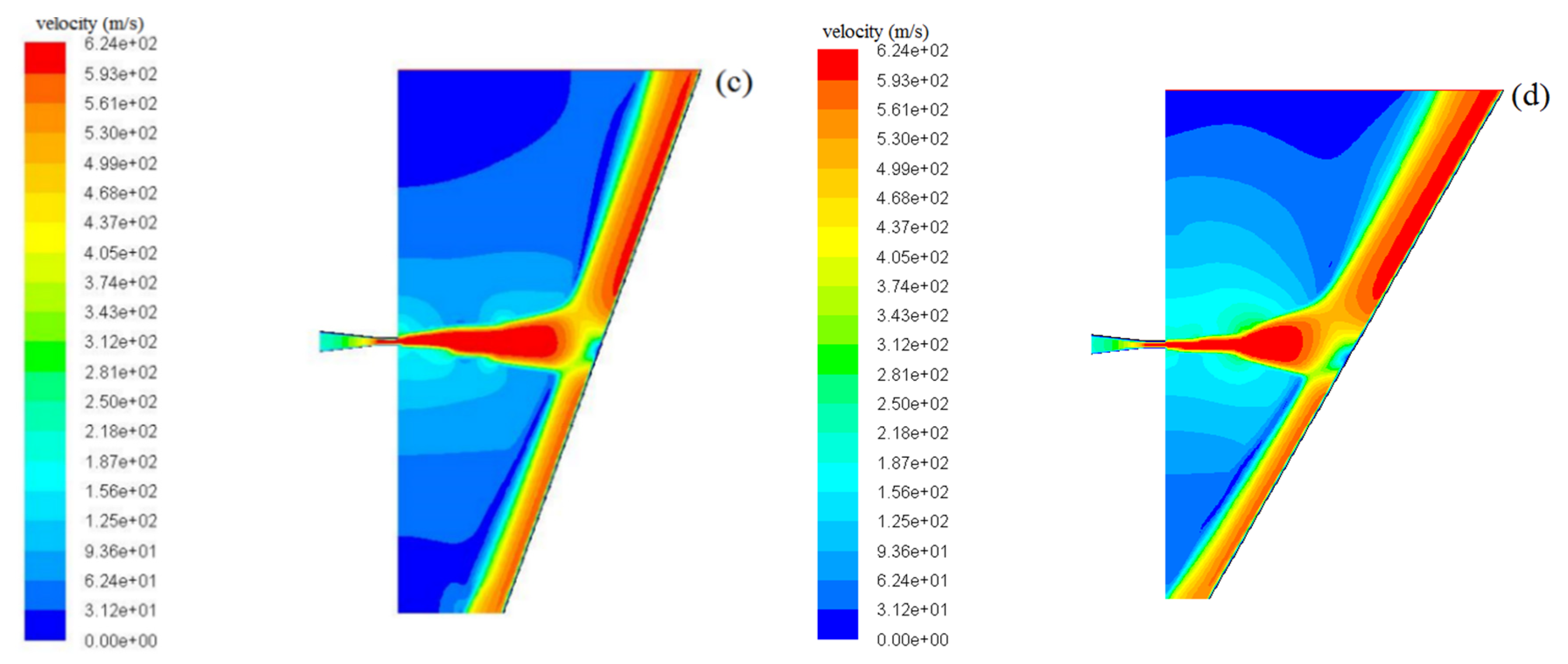
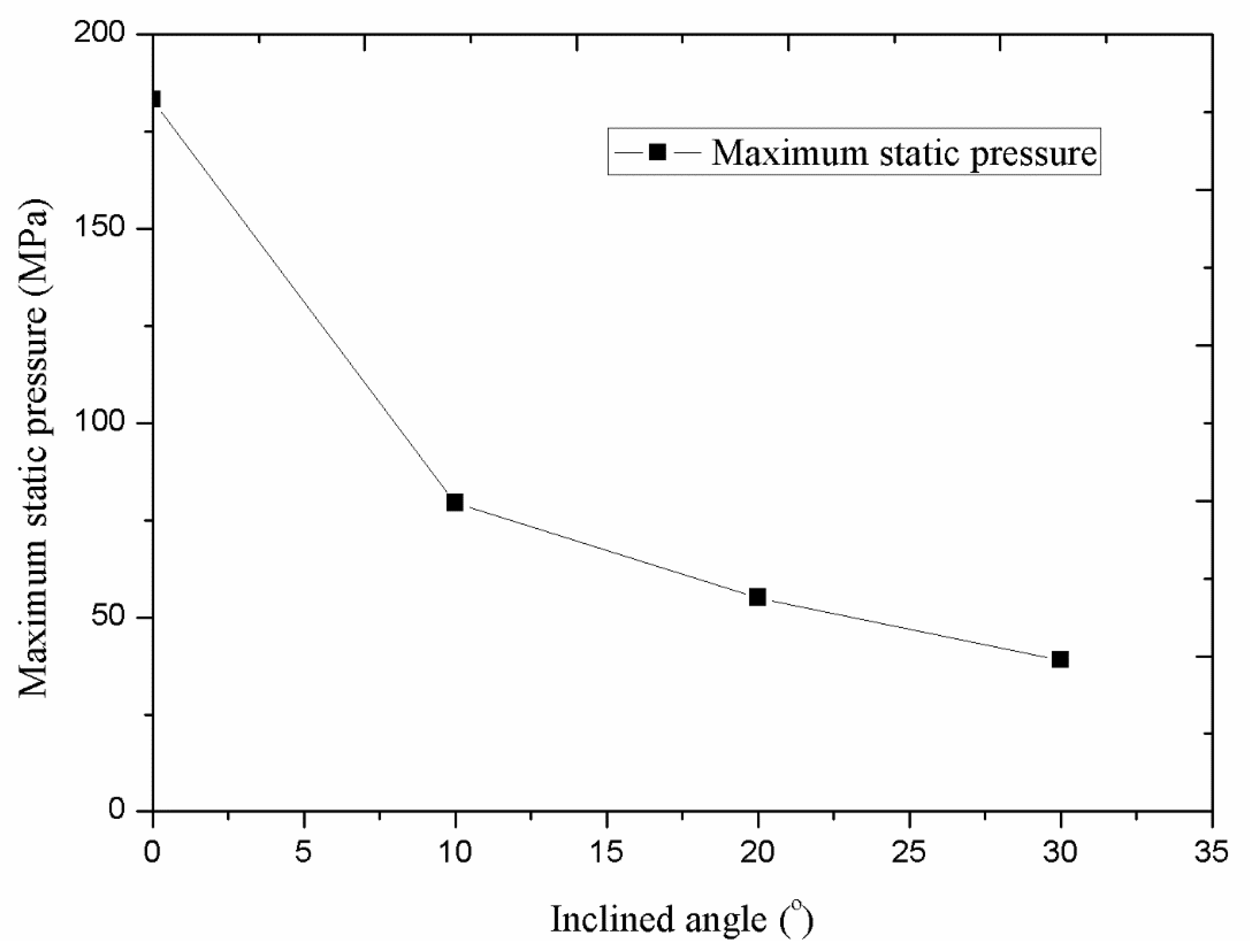
| No. | Travelling Speed (m/min) | Cleaning Efficiency (m2/H) |
|---|---|---|
| 1 | 1.5 | 27 |
| 2 | 2.25 | 40.5 |
| 3 | 3 | 54 |
| 4 | 3.75 | 67.5 |
© 2020 by the authors. Licensee MDPI, Basel, Switzerland. This article is an open access article distributed under the terms and conditions of the Creative Commons Attribution (CC BY) license (http://creativecommons.org/licenses/by/4.0/).
Share and Cite
Zhang, F.; Sun, X.; Li, Z.; Mohsin, I.; Wei, Y.; He, K. Influence of Processing Parameters on Coating Removal for High Pressure Water Jet Technology Based on Wall-Climbing Robot. Appl. Sci. 2020, 10, 1862. https://doi.org/10.3390/app10051862
Zhang F, Sun X, Li Z, Mohsin I, Wei Y, He K. Influence of Processing Parameters on Coating Removal for High Pressure Water Jet Technology Based on Wall-Climbing Robot. Applied Sciences. 2020; 10(5):1862. https://doi.org/10.3390/app10051862
Chicago/Turabian StyleZhang, Feifei, Xuerong Sun, Zhanpeng Li, Imran Mohsin, Yanan Wei, and Kai He. 2020. "Influence of Processing Parameters on Coating Removal for High Pressure Water Jet Technology Based on Wall-Climbing Robot" Applied Sciences 10, no. 5: 1862. https://doi.org/10.3390/app10051862





